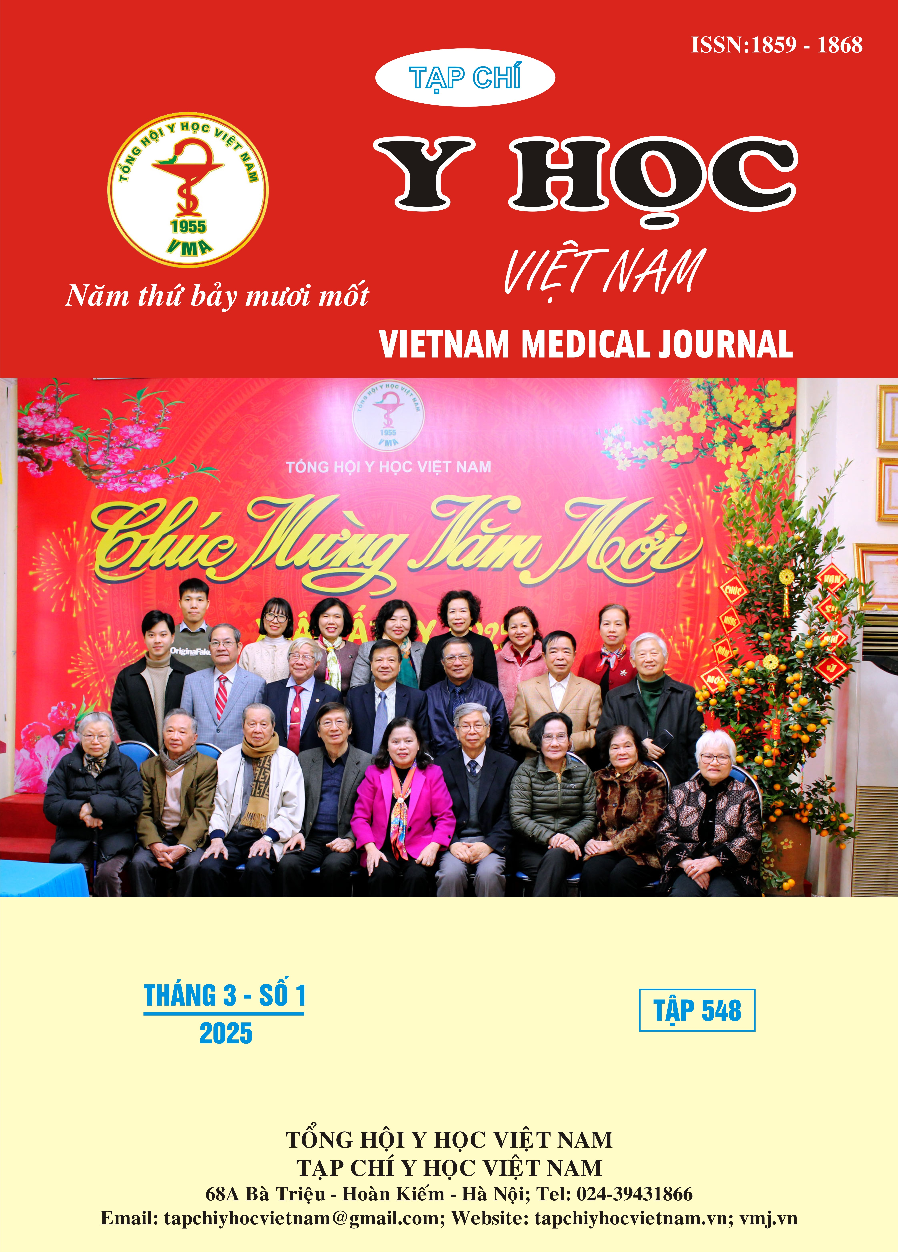FACTORS ASSOCIATED WITH THE RESULTS OF RADIOFREQUENCY ABLATION IN TREATMENT OF BENIGN THYROID NODULE
Main Article Content
Abstract
Objectives: Evaluating the factors related to the results of treatment of benign thyroid nodule with radiofrequency ablation. Methods: This is retrospective case series conducted at the Department of Thoracic and Vascular Surgery, Thu Duc city hospital. Results: From 5/2018 to 5/2023, there were 70 cases of benign thyroid nodule treated with radiofrequency ablation, the mean age 45.8 ± 14.5 years (22 – 75 years); 57 females (81.4%) and 13 males (18.6%). The nodule location is distributed in the right and left lobes, accounting for nearly equal proportions of 51.4% and 45.7%, respectively, with 2 cases located in the isthmus area (2.9%). The average diameter of thyroid nodule 30.37 ± 8.58mm (20-54ml), the mean volume of thyroid nodule 8.39 ± 7.95ml (3.3 – 29.9ml). Most thyroid nodules are solid, 62.9%, the remaining mixed and cystic forms are 32.8% and 4.3%, respectively. The energy and duration of ablation are proportional to size of thyroid nodule (p < 0.05). The mean volume reduction rate of thyroid nodules tends to increase gradually after intervention, highest in the first month at 36.88% and reaches a maximum of 75.04% at 6 months after ablation; The average volume reduction rate in groups with different solid tissue at 1 month after ablation was significantly different (p < 0.05). Conclusion: The energy and duration of ablation are proportional to thyroid nodule size. The rate of thyroid nodule volume reduction and the proportion of solid tissue in the thyroid nodule are also factors that affect the rate of thyroid nodule volume reduction after radiofrequency ablation.
Article Details
Keywords
Radiofrequency ablation (RFA), benign thyroid nodule
References
2. Khanh HQ, Vuong NL, Tien TQ. Factors Associated with the Efficacy of Radiofrequency Ablation in the Treatment of Benign Thyroid Nodules. World. 2020;12(3):118.
3. Kuo JH. Radiofrequency Ablation for Thyroid Nodules. In: Roman SA, Shen WT, Sosa JA, eds. Controversies in Thyroid Nodules and Differentiated Thyroid Cancer: A Case-Based Approach. Springer International Publishing; 2023:65-77.
4. Lin W-C, Kan N-N, Chen H-L, et al. Efficacy and safety of single-session radiofrequency ablation for benign thyroid nodules of different sizes: a retrospective study. International Journal of Hyperthermia. 2020;37(1):1082-1089.
5. Bellynda M, Kamil MR, Yarso KY. Radiofrequency ablation for benign thyroid nodule treatment: New solution in our center. Int J Surg Case Rep. Aug 2022;97:107418. doi:10.1016/ j.ijscr.2022.107418
6. Cesareo R, Naciu A, Iozzino M, et al. Nodule size as predictive factor of efficacy of radiofrequency ablation in treating autonomously functioning thyroid nodules. International Journal of Hyperthermia. 2018;34(5):617-623.
7. Baek JH, Kim YS, Lee D, Huh JY, Lee JH. Benign predominantly solid thyroid nodules: prospective study of efficacy of sonographically guided radiofrequency ablation versus control condition. American Journal of Roentgenology. 2010;194(4): 1137-1142. doi:10.2214/ AJR.09.3372
8. Guang Y, He W, Luo Y, et al. Patient satisfaction of radiofrequency ablation for symptomatic benign solid thyroid nodules: our experience for 2-year follow up. BMC cancer. 2019;19:1-8.


